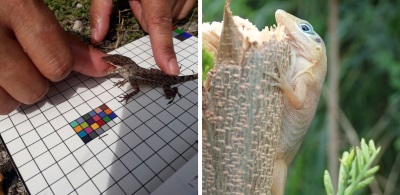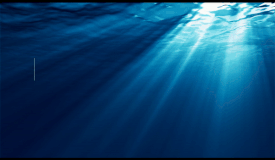In January 2020 researchers from the University of California and Smithsonian Institution, collaborated with the Nature Foundation St. Maarten to collect data about native reptile and amphibian species on St. Maarten. The scientists Michael L. Yuan and Jeffery H. Frederick are trying to understand critical differences between similar species and how their particular evolutionary paths deviated from neighboring populations could prove crucial in the protection of these species moving forward.
 PHILIPSBURG:--- The islands of the Lesser Antilles, including St. Maarten serve as biodiversity hotspots within the Caribbean, known to host a great number of endemic species. This research is not only critical for understanding the history of these species but in designing effective conservation strategies for the future. As climate change continues to threaten global biodiversity, learning to properly protect endemic species will become increasingly important.
PHILIPSBURG:--- The islands of the Lesser Antilles, including St. Maarten serve as biodiversity hotspots within the Caribbean, known to host a great number of endemic species. This research is not only critical for understanding the history of these species but in designing effective conservation strategies for the future. As climate change continues to threaten global biodiversity, learning to properly protect endemic species will become increasingly important.
“Each island in the Lesser Antilles has been uniquely colonized by various species of Anolis lizards. Sint Maarten, in particular, is home to two species of Anolis lizards, A. gingivinus and A. pogus, Anguilla and Bearded anole respectively. With its diverse habitat range, paired with the fact that the Anolis populations of the island are known to have a wide variety of colors and patterns which may be adaptive to their environment, St. Maarten provides the perfect research site to understand the link between genetic, cellular, and phenotypic characteristics with the environment” explained researcher Michael L. Yuan from the University of California, Berkeley.
The researchers took a closer look at how Anolis, a genus of lizards, are evolving to match conditions within their specific habitats, specifically dry scrublands versus more temperate climates. The researchers also focused on how the geographical history of the Leeward islands impacted the genetic evolution of local reptile and amphibian populations. To compare the evolutionary history of the Lesser Antilles, three different groups were selected: Eleutherodactylus johnstonei (Antilles whistling frog), Thecadactylus geckos (turnip-tailed geckos), and two species of Sphaerodactylus geckos (least geckos). Each of these is widely distributed throughout the islands yet exhibit distinct historical lineages which should provide an interesting base for comparison.
In addition, invasive species were sampled, the Cuban tree frog (Osteopilus septentrionalis) and the house gecko (Hemidactylus mabouia), to study their impacts on native populations as they are known to introduce diseases. Samples collected will provide insight into how these diseases impacted the evolution and spread of reptiles and amphibians throughout these islands.
Previously, the researchers completed a similar study on the island of Montserrat concerning A. lividus (Plymouth anole), as well as the islands of Sint Eustatius, Saint Kitts, and Nevis inhabited by A. bimaculatus (Panther anole) and A. schwartzi (Schwartz’s anole). Here they were able to show a clear relationship between physical characteristics of the lizard and the habitat and climate
Understanding the differences between endemic populations could prove instrumental in designing conservation plans to protect these species in the future. For example, understanding the genetic structure of island populations can identify genetically unique lineages that may be of conservation interest. Finally, through understanding their evolutionary history and adaptation to local environments, researchers can predict how further changes in the environment may impact these populations.














